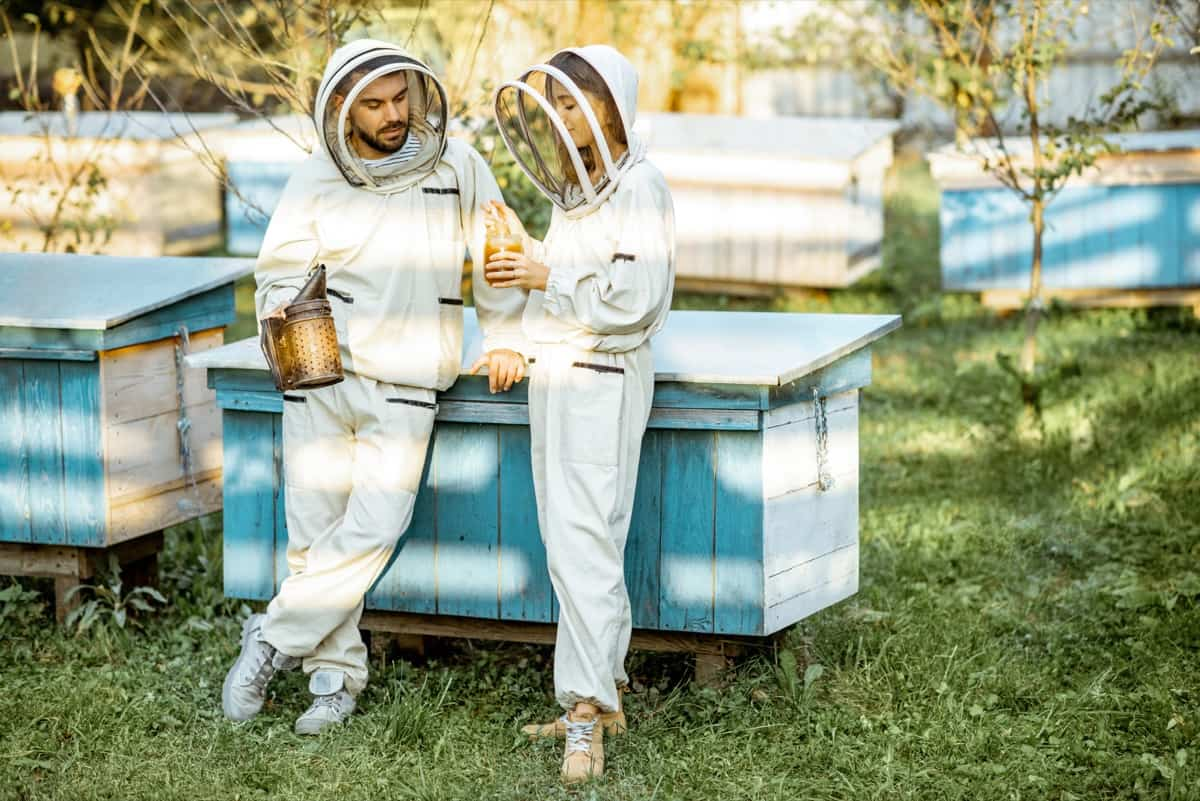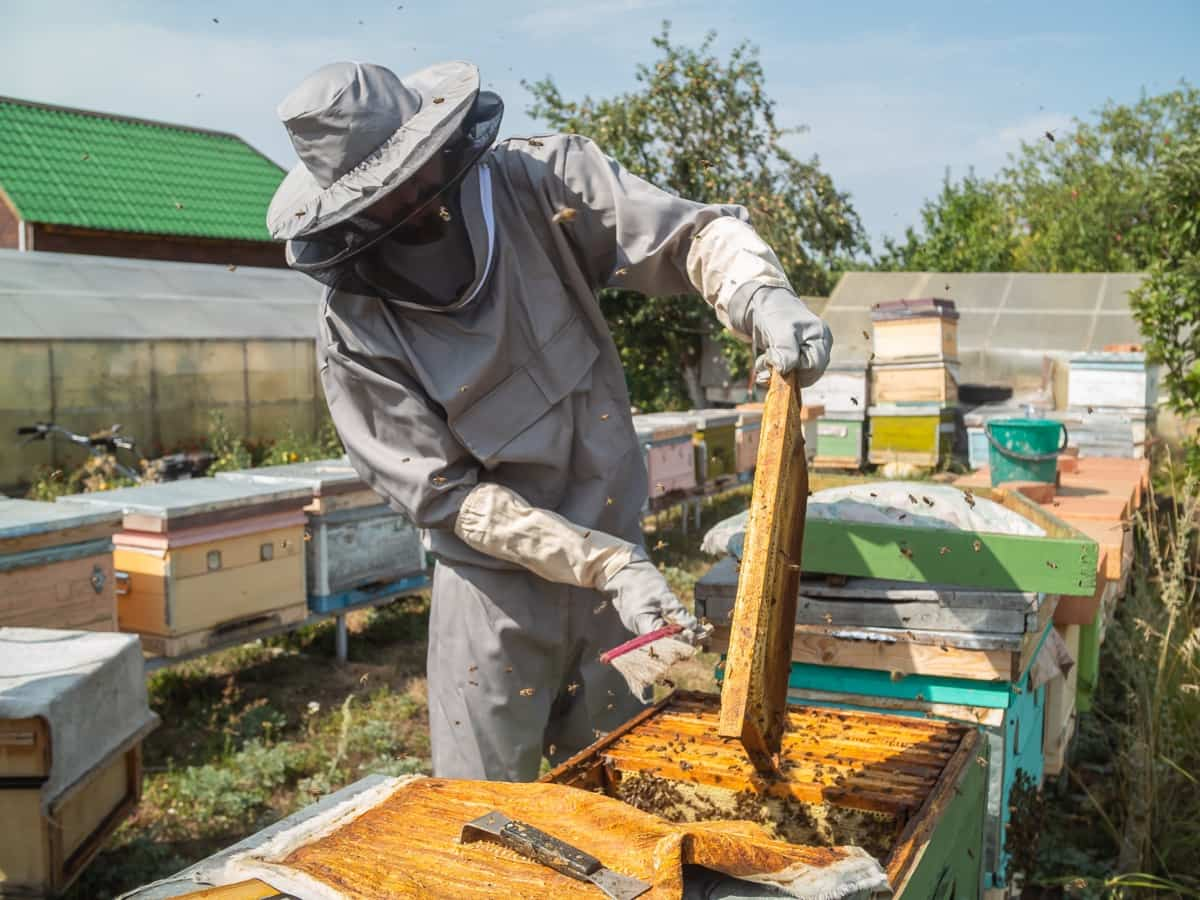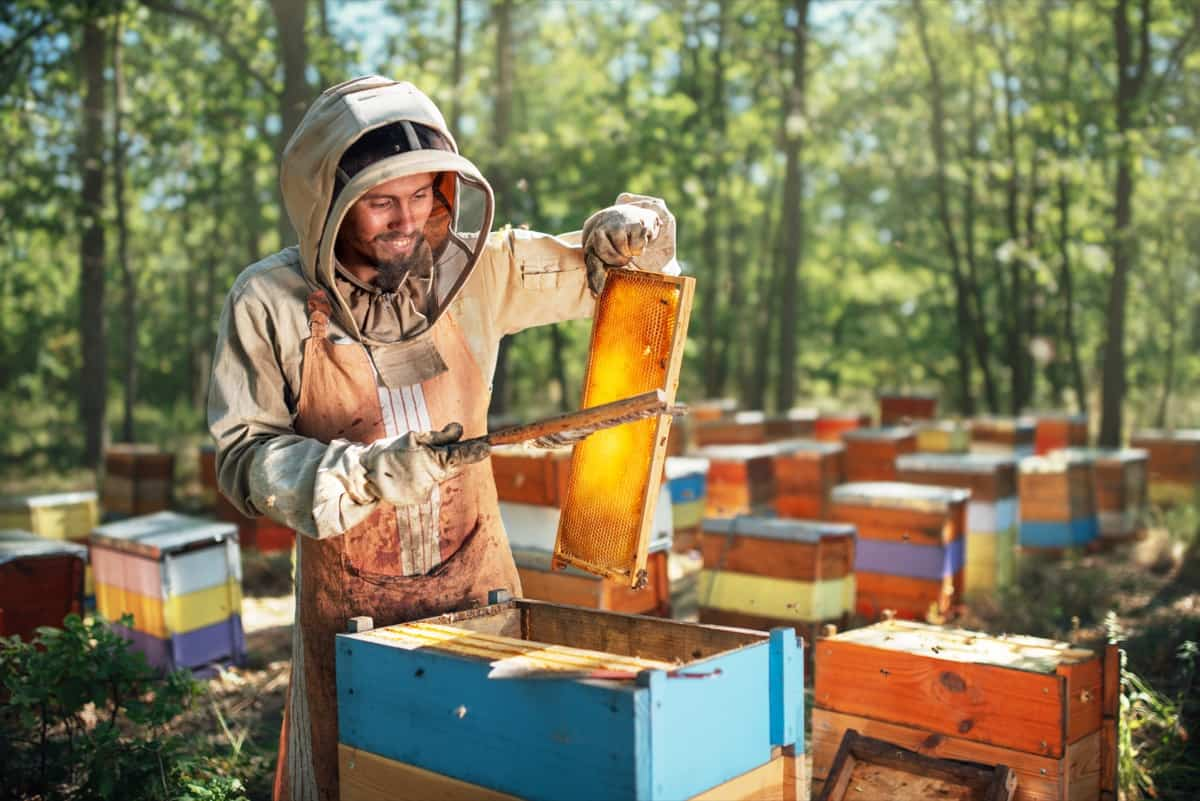Beekeeping has emerged as a lucrative business for many people, but the question on everyone’s mind is: How much money do beekeepers make a year? Answering this question is not as straightforward as it may seem. Is beekeeping profitable? Yes, but the economic value of beekeeping depends on various factors.

We will look at the estimated investment needed for a 1,000-colony bee operation, discuss what the beekeeping business plan should include, and even touch upon popular questions like “Is beekeeping profitable? Reddit” and how much beekeepers make per hive or an hour. We’ll also explore commercial beekeeping businesses for sale to give you a complete picture.
How Much Money Do Beekeepers Make
Apiary Size – a Biggest Factor That Determines Profit
Apiary size is the cornerstone for understanding how much money beekeepers can make. A small-scale operation with around 10 hives can earn roughly $300-$500 per hive per year. An estimated investment for a 1,000-colony bee operation could range from $200,000 to $300,000, including equipment and labor costs. Given successful management and optimal conditions, the profit margins in such large operations can be around 20-30%.
Type of Bees – Impacts the Profits Beekeeping
The type of bees you keep will directly impact your profits. Italian bees are generally known for high honey production but are not aggressive. Russian bees are hardier and can survive cold climates but may produce less honey. The profit can vary from $200 to $500 per hive annually, depending on the bee type and their productivity.
Location is Crucial in Determining Profits in Beekeeping
Your apiary location will play a vital role in your profits. Climate, flora, and proximity to water sources can significantly affect honey production and quality. For example, areas rich in clover can result in higher-quality honey and, consequently, higher profits. Renting land could also be a part of your beekeeping business plan, adding to the overall costs.
Honey Production Amount Determine the Profit
Honey production is a key element in determining your profits. A hive can produce about 20 to 60 pounds of honey annually. Raw honey can sell for $8 to $12 per pound, so the earnings per hive can range from $160 to $720. However, this doesn’t account for costs like equipment and labor, which can cut profit margins.
Other Bee Products Impacts Beekeeping Profit
Honey isn’t the only product that impacts the profit of beekeeping. Products like beeswax, royal jelly, and propolis can be sold for additional revenue. For example, beeswax can sell for around $8 per pound, and a hive can produce about 1 to 2 pounds yearly. These add-ons can help improve the profit margin, making the venture more lucrative.
In case you missed it: 10 Best Bee Smokers for Beekeepers: Top List for Your Beehive

Marketing and Sales Impacts Beekeeping Profit
How you market and sell your bee products will affect your bottom line. Online platforms offer a broad market but come with competition. Local markets and direct sales can offer higher profits but are limited in scale. Word of mouth and community engagement can also help. Including a strong marketing strategy in your beekeeping business plan is essential for profitability.
Equipment and Supplies – Factor Them Into Their Budget
Equipment costs can range from $200 to $400 per hive for beginners. Supplies like protective gear, smokers, and feeders are also essential. These initial investments can affect your profit margins, especially in the first few years. So, it’s vital to factor them into your budget and business plan to have a more accurate view of your potential earnings.
Labor Costs for Regular Maintenance and Management of the Apiary
Labor is often overlooked but can be significant, especially in larger operations. How much do beekeepers make an hour? If you’re running the operation yourself, you might not consider this a “cost,” but time is money. For commercial operations, labor costs can run from $10 to $20 per hour, depending on the skill level required. These costs should be factored into beekeeping’s overall economic value to determine its profitability accurately.
Seasonality Will Impact the Profits in Beekeeping Business
The seasonal nature of beekeeping is a critical aspect that tremendously impacts profitability. Most honey is produced during the spring and summer when flowers are abundant, so honey production can be low during the fall and winter. This seasonal fluctuation affects cash flow, making it essential to have a financial cushion or supplementary income during off-seasons. Cold climates can be particularly challenging, requiring more investment in hive insulation and winter feed, reducing the profit margin.
Some beekeepers opt for migrating their hives to warmer climates during off-seasons, which also incurs costs for transportation and setup. Furthermore, the risk of colony collapse or disease is higher during winter, leading to potential losses that should be accounted for in the beekeeping business plan. Therefore, understanding the seasonality aspect is vital for estimating costs and revenues, ultimately affecting how much money beekeepers make annually.
Government Regulations and Subsidies Will Hugely Impact Profits in Beekeeping
Compliance with government regulations is another crucial element that beekeepers can’t afford to overlook when calculating their profits. In some jurisdictions, beekeepers must register their apiaries and may be subject to regular inspections to ensure they meet health and safety standards. These regulatory procedures can add to the operating costs and affect profit margins. However, on the flip side, various government subsidies and grants are available for beekeepers, particularly those engaging in organic or sustainable beekeeping practices.
In case you missed it: Apiculture/Beekeeping Success Story: Check How This Beekeeper Turned Into Millionaire

These financial aids can significantly offset some initial setup or operational costs, thereby boosting profitability. Researching local, state, and federal regulations and available subsidies is essential when crafting your beekeeping business plan. Overlooking this aspect could result in fines or legal issues that would seriously impact the economic value of beekeeping.
How Much Money Do Beekeepers Make- Model Beekeeping Profits
| Factors | Small-Scale (10 Hives) | Medium-Scale (100 Hives) | Large-Scale (1,000 Hives) |
| Initial Investment | $2,000 – $4,000 | $20,000 – $40,000 | $200,000 – $300,000 |
| Annual Operating Costs | $1,000 – $2,000 | $10,000 – $20,000 | $100,000 – $200,000 |
| Honey Production (lbs per hive) | 20 – 60 | 20 – 60 | 20 – 60 |
| Revenue from Honey | $1,600 – $7,200 | $16,000 – $72,000 | $160,000 – $720,000 |
| Revenue from Other Products | $80 – $200 | $800 – $2,000 | $8,000 – $20,000 |
| Total Revenue | $1,680 – $7,400 | $16,800 – $74,000 | $168,000 – $740,000 |
| Profit Margin | 20% – 30% | 20% – 30% | 20% – 30% |
In case you missed it: How to Start Backyard Beekeeping in 10 Steps for Beginners

Conclusion
Seasonality and government regulations could either boost or dent your beekeeping profits, making them critical considerations in your business planning. Seasonal fluctuations require careful financial planning to ensure profitability year-round, while compliance with government regulations, although potentially costly, is non-negotiable.
On the brighter side, government subsidies can offer financial relief, helping to improve profit margins. Understanding these factors and incorporating them into your beekeeping business plan is imperative for long-term profitability and success.
- Feed Your Flock for Less: Top 10 Tips to Save on Chicken Feed
- Ultimate Guide to Ossabaw Island Hog: Breeding, Raising, Diet, and Care
- Hatching Answers: The Top 10 Reasons Your Chickens Aren’t Laying Eggs
- Eggs and Economics: Breaking Down the Cost of Raising Backyard Chickens
- Defend Your Greens: Proven Methods to Keep Iguanas Out of Your Garden
- Ultimate Guide to Cinnamon Queen Chicken: A Comprehensive Guide for Beginners
- Ultimate Guide to California Tan Chicken: Breeding, Raising, Diet, Egg-Production and Care
- Ultimate Guide to Marsh Daisy Chicken: Breeding, Raising, Diet, and Care
- 10 Types of Chicken Farming Businesses You Can Start for Profits